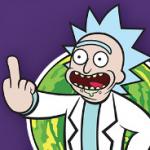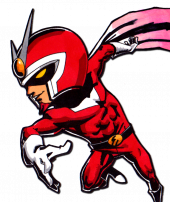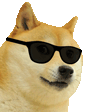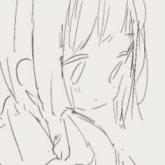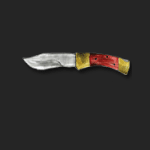
Nulled's longest thread
#521
 Posted 06 October 2017 - 05:37 PM
Posted 06 October 2017 - 05:37 PM
#524
 Posted 06 October 2017 - 05:57 PM
Posted 06 October 2017 - 05:57 PM
#525
 Posted 06 October 2017 - 05:57 PM
Posted 06 October 2017 - 05:57 PM
me
Forum Rules | Marketplace Rules | VIP F.A.Q
Confirm deals on Skype \ discord before trading with me
No longer part of Nulled.
#527
 Posted 06 October 2017 - 06:01 PM
Posted 06 October 2017 - 06:01 PM
Argentina (/ˌɑËrdÊ’É™nˈtiËnÉ™/ (About this sound listen); Spanish: [aɾxenˈtina]), officially the Argentine Republic[A] (Spanish: República Argentina), is a federal republic in the southern portion of South America. Sharing the bulk of the Southern Cone with its neighbor Chile to the west, the country is also bordered by Bolivia and Paraguay to the north, Brazil to the northeast, Uruguay and the South Atlantic Ocean to the east, and the Drake Passage to the south. With a mainland area of 2,780,400 km2 (1,073,500 sq mi),[B] Argentina is the eighth-largest country in the world, the second largest in Latin America, and the largest Spanish-speaking one. The country is subdivided into twenty-three provinces (Spanish: provincias, singular provincia) and one autonomous city (ciudad autónoma), Buenos Aires, which is the federal capital of the nation (Spanish: Capital Federal) as decided by Congress.[11] The provinces and the capital have their own constitutions, but exist under a federal system. Argentina claims sovereignty over part of Antarctica, the Falkland Islands (Spanish: Islas Malvinas), and South Georgia and the South Sandwich Islands. The earliest recorded human presence in the area of modern-day Argentina dates back to the Paleolithic period.[12] The country has its roots in Spanish colonization of the region during the 16th century.[13] Argentina rose as the successor state of the Viceroyalty of the RÃo de la Plata,[14] a Spanish overseas viceroyalty founded in 1776. The declaration and fight for independence (1810–1818) was followed by an extended civil war that lasted until 1861, culminating in the country's reorganization as a federation of provinces with Buenos Aires as its capital city. The country thereafter enjoyed relative peace and stability, with massive waves of European immigration radically reshaping its cultural and demographic outlook. The almost-unparalleled increase in prosperity led to Argentina becoming the seventh wealthiest developed nation in the world by the early 20th century.[15][16] After 1930, Argentina descended into political instability and periodic economic crises that pushed it back into underdevelopment,[17] though it nevertheless remained among the fifteen richest countries until the mid-20th century.[15] Argentina retains its historic status as a middle power[18] in international affairs, and is a prominent regional power in the Southern Cone and Latin America.[19][20] Argentina has the second largest economy in South America, the third-largest in Latin America and is a member of the G-15 and G-20 major economies. It is also a founding member of the United Nations, World Bank, World Trade Organization, Mercosur, Union of South American Nations, Community of Latin American and Caribbean States and the Organization of Ibero-American States. It is the country with the second highest Human Development Index in Latin America with a rating of "very high".[21] Because of its stability, market size and growing high-tech sector,[22] Argentina is classified as an upper-middle-income economy in the 2018 fiscal year.[23]
Name and etymology The description of the country by the word Argentina has been found on a Venice map in 1536.[24] In English the name "Argentina" probably comes from the Spanish language, however the naming itself is not Spanish, but Italian. Argentina (masculine argentino) means in Italian "(made) of silver, silver coloured", probably borrowed from the Old French adjective argentine "(made) of silver" > "silver coloured" already mentioned in the 12th century.[25] The French word argentine is the feminine form of argentin and derives from argent "silver" with the suffix -in (same construction as Old French acerin "(made) of steel", from acier "steel" + -in or sapin "(made) of fir wood", from OF sap "fir" + -in). The Italian naming "Argentina" for the country implies Argentina Terra "land of silver" or Argentina costa "coast of silver". In Italian, the adjective or the proper noun is often used in an autonomous way as a substantive and replaces it and it is said l'Argentina (It cannot be for the proper noun in French for example). The name Argentina was probably first given by the Venetian and Genoese navigators, such as Giovanni Caboto. In Spanish and Portuguese, the words for "silver" are respectively plata and prata and "(made) of silver" is said plateado and prateado. Argentina was first associated with the silver mountains legend, widespread among the first European explorers of the La Plata Basin.[26] The first written use of the name in Spanish can be traced to La Argentina,[C] a 1602 poem by MartÃn del Barco Centenera describing the region.[27] Although "Argentina" was already in common usage by the 18th century, the country was formally named "Viceroyalty of the RÃo de la Plata" by the Spanish Empire, and "United Provinces of the RÃo de la Plata" after independence. The 1826 constitution included the first use of the name "Argentine Republic" in legal documents.[28] The name "Argentine Confederation" was also commonly used and was formalized in the Argentine Constitution of 1853.[29] In 1860 a presidential decree settled the country's name as "Argentine Republic",[30] and that year's constitutional amendment ruled all the names since 1810 as legally valid.[31][D] In the English language the country was traditionally called "the Argentine", mimicking the typical Spanish usage la Argentina[32] and perhaps resulting from a mistaken shortening of the fuller name 'Argentine Republic'. 'The Argentine' fell out of fashion during the mid-to-late 20th century, and now the country is simply referred to as "Argentina". In the Spanish language "Argentina" is feminine ("La [República] Argentina"), taking the feminine article "La" as the initial syllable of "Argentina" is unstressed.[33] History Main article: History of Argentina Pre-Columbian era Main article: Indigenous peoples in Argentina Stencilled hands on the cave's wall The Cave of the Hands in Santa Cruz province, with indigenous artwork dating from 13,000–9,000 years ago The earliest traces of human life in the area now known as Argentina are dated from the Paleolithic period, with further traces in the Mesolithic and Neolithic.[12] Until the period of European colonization, Argentina was relatively sparsely populated by a wide number of diverse cultures with different social organizations,[34] which can be divided into three main groups.[35] The first group are basic hunters and food gatherers without development of pottery, such as the Selknam and Yaghan in the extreme south. The second group are advanced hunters and food gatherers which include the Puelche, Querandà and Serranos in the center-east; and the Tehuelche in the south—all of them conquered by the Mapuche spreading from Chile[36]—and the Kom and Wichi in the north. The last group are farmers with pottery, like the Charrúa, Minuane and Guaranà in the northeast, with slash and burn semisedentary existence;[34] the advanced Diaguita sedentary trading culture in the northwest, which was conquered by the Inca Empire around 1480; the Toconoté and Hênîa and Kâmîare in the country's center, and the Huarpe in the center-west, a culture that raised llama cattle and was strongly influenced by the Incas.[34] Colonial era Main article: Colonial Argentina See also: Spanish colonization of the Americas Painting showing the surrender during the British invasions of the RÃo de la Plata. The surrender of Beresford to Santiago de Liniers during the British invasions of the RÃo de la Plata Europeans first arrived in the region with the 1502 voyage of Amerigo Vespucci. The Spanish navigators Juan DÃaz de SolÃs and Sebastian Cabot visited the territory that is now Argentina in 1516 and 1526, respectively.[13] In 1536 Pedro de Mendoza founded the small settlement of Buenos Aires, which was abandoned in 1541.[37] Further colonization efforts came from Paraguay—establishing the Governorate of the RÃo de la Plata—Peru and Chile.[38] Francisco de Aguirre founded Santiago del Estero in 1553. Londres was founded in 1558; Mendoza, in 1561; San Juan, in 1562; San Miguel de Tucumán, in 1565.[39] Juan de Garay founded Santa Fe in 1573 and the same year Jerónimo Luis de Cabrera set up Córdoba.[40] Garay went further south to re-found Buenos Aires in 1580.[41] San Luis was established in 1596.[39] The Spanish Empire subordinated the economic potential of the Argentine territory to the immediate wealth of the silver and gold mines in Bolivia and Peru, and as such it became part of the Viceroyalty of Peru until the creation of the Viceroyalty of the RÃo de la Plata in 1776 with Buenos Aires as its capital.[42] Buenos Aires repelled two ill-fated British invasions in 1806 and 1807.[43] The ideas of the Age of Enlightenment and the example of the first Atlantic Revolutions generated criticism of the absolutist monarchy that ruled the country. As in the rest of Spanish America, the overthrow of Ferdinand VII during the Peninsular War created great concern.[44] Independence and civil wars Main articles: Argentine War of Independence and Argentine Civil Wars Painting of San MartÃn holding the Argentine flag Portrait of General José de San Martin, Libertador of Argentina, Chile and Peru Beginning a process from which Argentina was to emerge as successor state to the Viceroyalty,[14] the 1810 May Revolution replaced the viceroy Baltasar Hidalgo de Cisneros with the First Junta, a new government in Buenos Aires composed by locals.[44] In the first clashes of the Independence War the Junta crushed a royalist counter-revolution in Córdoba,[45] but failed to overcome those of the Banda Oriental, Upper Peru and Paraguay, which later became independent states.[46] Revolutionaries split into two antagonist groups: the Centralists and the Federalists—a move that would define Argentina's first decades of independence.[47] The Assembly of the Year XIII appointed Gervasio Antonio de Posadas as Argentina's first Supreme Director.[47] In 1816 the Congress of Tucumán formalized the Declaration of Independence.[48] One year later General MartÃn Miguel de Güemes stopped royalists on the north, and General José de San MartÃn took an army across the Andes and secured the independence of Chile; then he led the fight to the Spanish stronghold of Lima and proclaimed the independence of Peru.[49][E] In 1819 Buenos Aires enacted a centralist constitution that was soon abrogated by federalists.[51] The 1820 Battle of Cepeda, fought between the Centralists and the Federalists, resulted in the end of the Supreme Director rule. In 1826 Buenos Aires enacted another centralist constitution, with Bernardino Rivadavia being appointed as the first president of the country. However, the interior provinces soon rose against him, forced his resignation and discarded the constitution.[52] Centralists and Federalists resumed the civil war; the latter prevailed and formed the Argentine Confederation in 1831, led by Juan Manuel de Rosas.[53] During his regime he faced a French blockade (1838–1840), the War of the Confederation (1836–1839), and a combined Anglo-French blockade (1845–1850), but remained undefeated and prevented further loss of national territory.[54] His trade restriction policies, however, angered the interior provinces and in 1852 Justo José de Urquiza, another powerful caudillo, beat him out of power. As new president of the Confederation, Urquiza enacted the liberal and federal 1853 Constitution. Buenos Aires seceded but was forced back into the Confederation after being defeated in the 1859 Battle of Cepeda.[55] Rise of the modern nation Main articles: List of Presidents of Argentina and Generation of '80 See also: Argentine–Chilean naval arms race and South American dreadnought race The people gathered in front of the Buenos Aires Cabildo during the May Revolution. Overpowering Urquiza in the 1861 Battle of Pavón, Bartolomé Mitre secured Buenos Aires predominance and was elected as the first president of the reunified country. He was followed by Domingo Faustino Sarmiento and Nicolás Avellaneda; these three presidencies set up the bases of the modern Argentine State.[56] The Argentina Centennial was celebrated on 25 May 1910. Starting with Julio Argentino Roca in 1880, ten consecutive federal governments emphasized liberal economic policies. The massive wave of European immigration they promoted—second only to the United States'—led to a near-reinvention of Argentine society and economy that by 1908 had placed the country as the seventh wealthiest[15] developed nation[16] in the world. Driven by this immigration wave and decreasing mortality, the Argentine population grew fivefold and the economy 15-fold:[57] from 1870 to 1910 Argentina's wheat exports went from 100,000 to 2,500,000 t (110,000 to 2,760,000 short tons) per year, while frozen beef exports increased from 25,000 to 365,000 t (28,000 to 402,000 short tons) per year,[58] placing Argentina as one of the world's top five exporters.[59] Its railway mileage rose from 503 to 31,104 km (313 to 19,327 mi).[60] Fostered by a new public, compulsory, free and secular education system, literacy skyrocketed from 22% to 65%, a level higher than most Latin American nations would reach even fifty years later.[59] Furthermore, real GDP grew so fast that despite the huge immigration influx, per capita income between 1862 and 1920 went from 67% of developed country levels to 100%:[60] In 1865, Argentina was already one of the top 25 nations by per capita income. By 1908, it had surpassed Denmark, Canada and The Netherlands to reach 7th place—behind Switzerland, New Zealand, Australia, the United States, the United Kingdom and Belgium. Argentina's per capita income was 70% higher than Italy's, 90% higher than Spain's, 180% higher than Japan's and 400% higher than Brazil's.[15] Despite these unique achievements, the country was slow to meet its original goals of industrialization:[61] after steep development of capital-intensive local industries in the 1920s, a significant part of the manufacture sector remained labor-intensive in the 1930s.[62] In 1912, President Roque Sáenz Peña enacted universal and secret male suffrage, which allowed Hipólito Yrigoyen, leader of the Radical Civic Union (or UCR), to win the 1916 election. He enacted social and economic reforms and extended assistance to small farms and businesses. Argentina stayed neutral during World War I. The second administration of Yrigoyen faced an economic crisis, precipitated by the Great Depression.[63] Infamous Decade Main article: Infamous Decade In 1930, Yrigoyen was ousted from power by the military led by José Félix Uriburu. Although Argentina remained among the fifteen richest countries until mid-century,[15] this coup d'état marks the start of the steady economic and social decline that pushed the country back into underdevelopment.[17] Official presidential portrait of Juan Domingo Perón and his wife Eva Perón, 1948 Uriburu ruled for two years; then AgustÃn Pedro Justo was elected in a fraudulent election, and signed a controversial treaty with the United Kingdom. Argentina stayed neutral during World War II, a decision that had full British support but was rejected by the United States after the attack on Pearl Harbor. A new military coup toppled the government, and Argentina declared war on the Axis Powers a month before the end of World War II in Europe. The minister of welfare, Juan Domingo Perón, was fired and jailed because of his high popularity among workers. His liberation was forced by a massive popular demonstration, and he went on to win the 1946 election.[64] Peronism Main article: Peronism Perón created a political movement known as Peronism. He nationalized strategic industries and services, improved wages and working conditions, paid the full external debt and achieved nearly full employment. The economy, however, began to decline in 1950 because of over-expenditure. His highly popular wife, Eva Perón, played a central political role. She pushed Congress to enact women's suffrage in 1947,[65] and developed an unprecedented social assistance to the most vulnerable sectors of society.[66] However, her declining health did not allow her to run for the vice-presidency in 1951, and she died of cancer the following year. Perón was reelected in 1951, even surpassing his 1946 performance. In 1955 the Navy bombed the Plaza de Mayo in an ill-fated attempt to kill the President. A few months later, during the self-called Liberating Revolution coup, he resigned and went into exile in Spain.[67] The new head of State, Pedro Eugenio Aramburu, proscribed Peronism and banned all of its manifestations; nevertheless, Peronists kept an organized underground. Arturo Frondizi from the UCR won the following elections.[68] He encouraged investment to achieve energetic and industrial self-sufficiency, reversed a chronic trade deficit and lifted Peronism proscription; yet his efforts to stay on good terms with Peronists and the military earned him the rejection of both and a new coup forced him out.[69] But Senate Chief José MarÃa Guido reacted swiftly and applied the anti-power vacuum legislation, becoming president instead; elections were repealed and Peronism proscribed again. Arturo Illia was elected in 1963 and led to an overall increase in prosperity; however his attempts to legalize Peronism resulted in his overthrow in 1966 by the Juan Carlos OnganÃa-led coup d'état called the Argentine Revolution, creating a new military government that sought to rule indefinitely.[70] Dirty War Main article: Dirty War The "Dirty War" (Spanish: Guerra Sucia) was part of Operation Condor, for which the United States government provided technical support and supplied military aid to during the Johnson, Nixon, Ford, Carter, and Reagan administrations. The Dirty War involved state terrorism in Argentina and elsewhere in the Southern Cone against political dissidents, with military and security forces employing urban and rural violence against left-wing guerrillas, political dissidents, and anyone believed to be associated with socialism.[71][72][73] Victims of the violence in Argentina alone included an estimated 15,000 to 30,000 left-wing activists and militants, including trade unionists, students, journalists, Marxists, Peronist guerrillas[74] and alleged sympathizers.[75] Some 10,000 of the "disappeared" were believed to be guerrillas of the Montoneros (MPM), and the Marxist People's Revolutionary Army (ERP).[76][77][78] The guerrillas were responsible for causing at least 6,000 casualties among the military, police forces and civilian population according to a National Geographic Magazine article in the mid-1980s.[79] The disappeared ones were considered to be a political or ideological threat to the military junta and their disappearances an attempt to silence the opposition and break the determination of the guerillas.[80] Raúl AlfonsÃn, first democratically elected president following the military government. Declassified documents of the Chilean secret police cite an official estimate by the Batallón de Inteligencia 601 of 22,000 killed or "disappeared" between 1975 and mid-1978. During this period, in which it was later revealed 8,625 "disappeared" in the form of PEN (Poder Ejecutivo Nacional, anglicized as "National Executive Power") detainees who were held in clandestine detention camps throughout Argentina before eventually being freed under diplomatic pressure.[81] The number of people believed to have been killed or "disappeared", depending on the source, range from 9,089 to 30,000 in the period from 1976 to 1983, when the military was forced from power following Argentina's defeat in the Falklands War.[82][83] The National Commission on the Disappearance of Persons estimates that around 13,000 were disappeared.[84] After democratic government was restored, Congress passed legislation to provide compensation to victims' families. Some 11,000 Argentines have applied to the relevant authorities and received up to US $200,000 each as monetary compensation for the loss of loved ones during the military dictatorship.[85] The exact chronology of the repression is still debated, however, as in some senses the long political war started in 1969. Trade unionists were targeted for assassination by the Peronist and Marxist paramilitaries as early as 1969, and individual cases of state-sponsored terrorism against Peronism and the left can be traced back to the Bombing of Plaza de Mayo in 1955. The Trelew massacre of 1972, the actions of the Argentine Anticommunist Alliance since 1973, and Isabel MartÃnez de Perón's "annihilation decrees" against left-wing guerrillas during Operativo Independencia (translates to Operation of Independence) in 1975, have also been suggested as dates for the beginning of the Dirty War. OnganÃa shut down Congress, banned all political parties and dismantled student and worker unions. In 1969, popular discontent led to two massive protests: the Cordobazo and the Rosariazo. The terrorist guerrilla organization Montoneros kidnapped and executed Aramburu.[86] The newly chosen head of government, Alejandro AgustÃn Lanusse, seeking to ease the growing political pressure, let Héctor José Cámpora be the Peronist candidate instead of Perón. Cámpora won the March 1973 election, issued a pardon for condemned guerrilla members and then secured Perón's return from his exile in Spain.[87] On the day Perón returned to Argentina, the clash between Peronist internal factions—right-wing union leaders and left-wing youth from Montoneros—resulted in the Ezeiza Massacre. Cámpora resigned, overwhelmed by political violence, and Perón won the September 1973 election with his third wife Isabel as vice-president. He expelled Montoneros from the party[88] and they became once again a clandestine organization. José López Rega organized the Argentine Anticommunist Alliance (AAA) to fight against them and the People's Revolutionary Army (ERP). Perón died in July 1974 and was succeeded by his wife, who signed a secret decree empowering the military and the police to "annihilate" the left-wing subversion,[89] stopping ERP's attempt to start a rural insurgence in Tucumán province.[90] Isabel Perón was ousted one year later by a junta of the three armed forces, led by army general Jorge Rafael Videla. They initiated the National Reorganization Process, often shortened to Proceso.[91] The Proceso shut down Congress, removed the judges of the Supreme Court, banned political parties and unions, and resorted to the forced disappearance of suspected guerrilla members and of anyone believed to be associated with the left-wing. By the end of 1976 Montoneros had lost near 2,000 members; by 1977, the ERP was completely defeated. A severely weakened Montoneros launched a counterattack in 1979, which was quickly annihilated, ending the guerrilla threat. Nevertheless, the junta stayed in power. Then head of state General Leopoldo Galtieri launched Operation Rosario, which escalated into the Falklands War (Spanish: Guerra de Malvinas); within two months Argentina was defeated by the United Kingdom. Reynaldo Bignone replaced Galtieri and began to organize the transition to democratic rule.[92] Contemporary era Main articles: Argentine economic crisis (1999–2002) and Kirchnerism Photograph of Cristina Kirchner. Cristina Fernández and Néstor Kirchner during the Bicentenario. The couple occupied the presidency of Argentina for 12 years, him from 2003 to 2007 and her from 2007 to 2015. Raúl AlfonsÃn won the 1983 elections campaigning for the prosecution of those responsible for human rights violations during the Proceso: the Trial of the Juntas and other martial courts sentenced all the coup's leaders but, under military pressure, he also enacted the Full Stop and Due Obedience laws,[93][94] which halted prosecutions further down the chain of command. The worsening economic crisis and hyperinflation reduced his popular support and the Peronist Carlos Menem won the 1989 election. Soon after, riots forced AlfonsÃn to an early resignation.[95] Menem embraced neo-liberal policies:[96] a fixed exchange rate, business deregulation, privatizations and dismantling of protectionist barriers normalized the economy for a while. He pardoned the officers who had been sentenced during AlfonsÃn's government. The 1994 Constitutional Amendment allowed Menem to be elected for a second term. The economy began to decline in 1995, with increasing unemployment and recession;[97] led by Fernando de la Rúa, the UCR returned to the presidency in the 1999 elections.[98] Mauricio Macri, incumbent President of Argentina De la Rúa kept Menem's economic plan despite the worsening crisis, which led to growing social discontent.[97] A massive capital flight was responded to with a freezing of bank accounts, generating further turmoil. The December 2001 riots forced him to resign.[99] Congress appointed Eduardo Duhalde as acting president, who abrogated the fixed exchange rate established by Menem,[100] causing many Argentinians to lose a significant portion of their savings. By the late 2002 the economic crisis began to recede, but the assassination of two piqueteros by the police caused political commotion, prompting Duhalde to move elections forward.[101] Néstor Kirchner was elected as the new president.[102] Boosting the neo-Keynesian economic policies[101] laid by Duhalde, Kirchner ended the economic crisis attaining significant fiscal and trade surpluses, and steep GDP growth.[103] Under his administration Argentina restructured its defaulted debt with an unprecedented discount of about 70% on most bonds, paid off debts with the International Monetary Fund,[104] purged the military of officers with doubtful human rights records,[105] nullified and voided the Full Stop and Due Obedience laws,[106][F] ruled them as unconstitutional, and resumed legal prosecution of the Juntas' crimes. He did not run for reelection, promoting instead the candidacy of his wife, senator Cristina Fernández de Kirchner, who was elected in 2007[108] and reelected in 2011. On 22 November 2015, after a tie in the first round of presidential elections on 25 October, Mauricio Macri won the first ballotage in Argentina's history, beating Front for Victory candidate Daniel Scioli and becoming president-elect. Macri is the first democratically elected non-radical or peronist president since 1916.[109] He took office on 10 December 2015. In April 2016, the Macri Government introduced austerity measures intended to tackle inflation and public deficits.[110] Geography Main article: Geography of Argentina Aconcagua is the highest mountain outside of Asia, at 6,960.8 metres (22,837 ft), and the highest point in the Southern Hemisphere.[111] With a mainland surface area of 2,780,400 km2 (1,073,518 sq mi),[B] Argentina is located in southern South America, sharing land borders with Chile across the Andes to the west;[112] Bolivia and Paraguay to the north; Brazil to the northeast, Uruguay and the South Atlantic Ocean to the east;[113] and the Drake Passage to the south;[114] for an overall land border length of 9,376 km (5,826 mi). Its coastal border over the RÃo de la Plata and South Atlantic Ocean is 5,117 km (3,180 mi) long.[113] Argentina's highest point is Aconcagua in the Mendoza province (6,959 m (22,831 ft) above sea level),[115] also the highest point in the Southern and Western Hemispheres.[116] The lowest point is Laguna del Carbón in the San Julián Great Depression Santa Cruz province (−105 m (−344 ft) below sea level,[115] also the lowest point in the Southern and Western Hemispheres, and the seventh lowest point on Earth)[117] The northernmost point is at the confluence of the Grande de San Juan and RÃo Mojinete rivers in Jujuy province; the southernmost is Cape San PÃo in Tierra del Fuego province; the easternmost is northeast of Bernardo de Irigoyen, Misiones and the westernmost is within Los Glaciares National Park in Santa Cruz province.[113] The maximum north–south distance is 3,694 km (2,295 mi), while the maximum east–west one is 1,423 km (884 mi).[113] Some of the major rivers are the Paraná, Uruguay—which join to form the RÃo de la Plata, Paraguay, Salado, Negro, Santa Cruz, Pilcomayo, Bermejo and Colorado.[118] These rivers are discharged into the Argentine Sea, the shallow area of the Atlantic Ocean over the Argentine Shelf, an unusually wide continental platform.[119] Its waters are influenced by two major ocean currents: the warm Brazil Current and the cold Falklands Current.[120] Regions Main article: Regions of Argentina Argentina is divided into seven geographical regions:[G] Northwest, a continuation of the high Puna with even higher, more rugged topography to the far-west;[121] the arid precordillera, filled with narrow valleys or quebradas to the mid-west;[122] and an extension of the mountainous Yungas jungles to the east.[122] Mesopotamia, a subtropical wedge covering the western Paraná Plateau and neighboring lowlands enclosed by the Paraná and Uruguay rivers.[116] Gran Chaco, a large, subtropical and tropical low-lying, gently sloping alluvial plain[123] between Mesopotamia and the Andes. Sierras Pampeanas, a series of medium-height mountain chains located in the center.[124] Cuyo, a basin and range area in the central Andes piedmont, to the west.[123] Pampas, a massive and hugely fertile alluvial plain located in the center east.[125] Patagonia, a large southern plateau consisting mostly of arid, rocky steppes[116] to the east; with moister cold grasslands to the south and dense subantarctic forests to the west.[126] Pampas Sierras Pampeanas Mesopotamia Cuyo Gran Chaco Northwest Puna Northwest Valleys Northwest Yungas Western Patagonia Eastern Patagonia Northwest Patagonia
Users browsing this thread:
 Sign In
Sign In Create Account
Create Account



